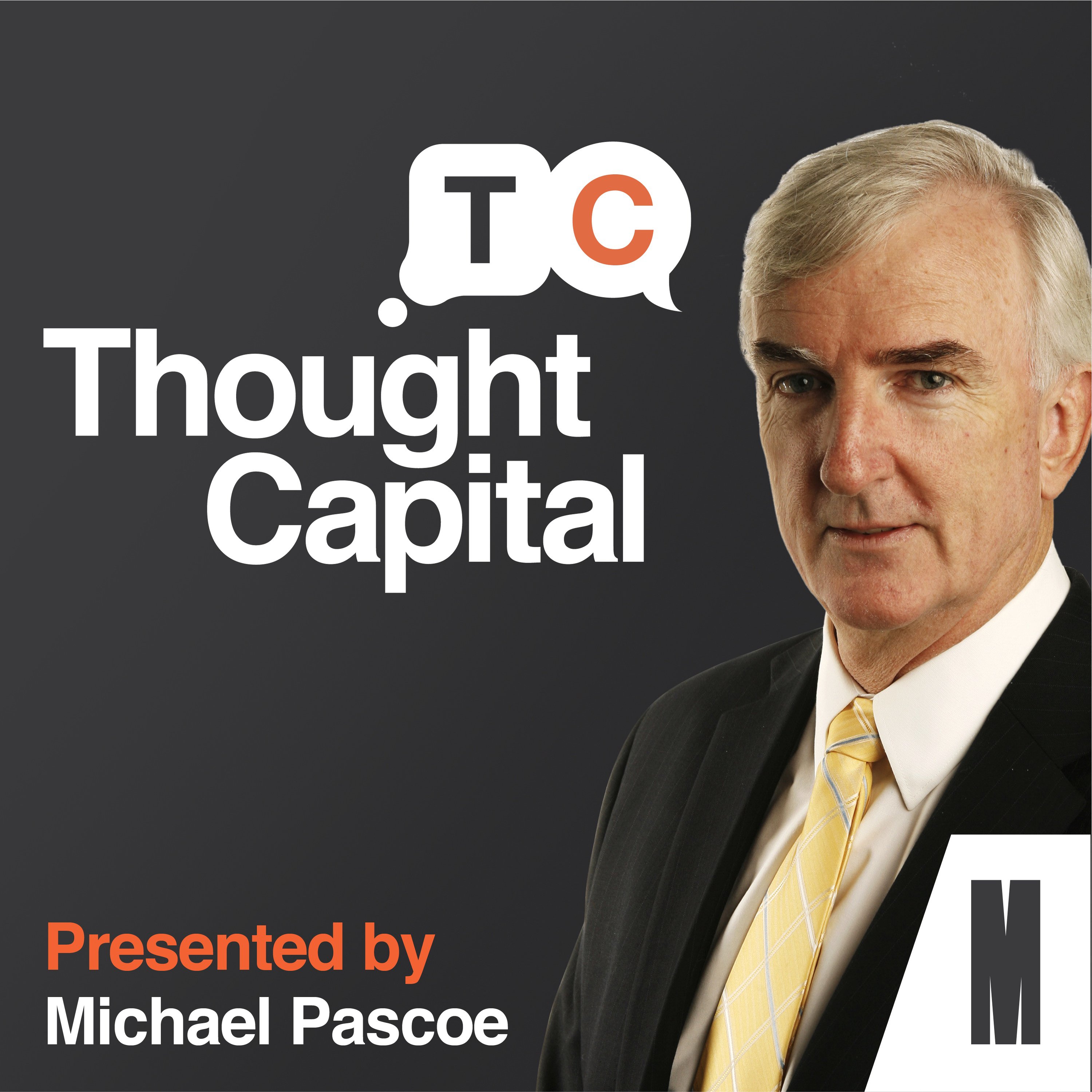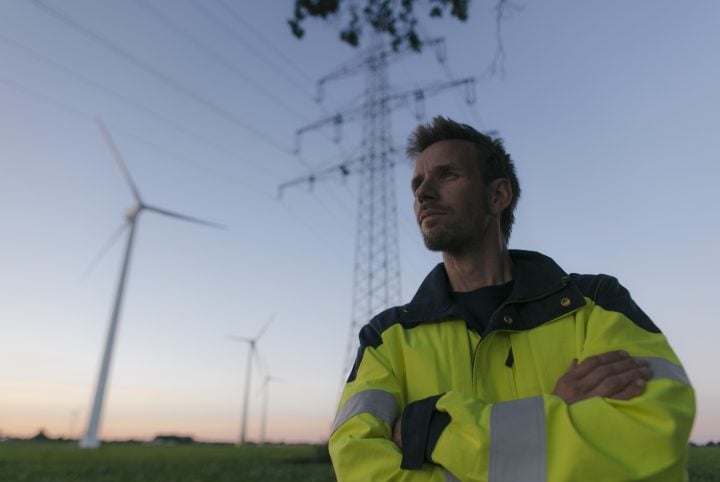Michael Pascoe: Hello, I’m Michael Pascoe. Welcome to Thought Capital, the podcast that delves into the wealth of ideas created by the experts at Monash Business School in Melbourne, Australia.
Banita Bissoondoyal-Bheenik: We have the problem of lump sum withdrawal. Most people withdraw the lump sum and don’t invest in an income stream product, and therefore the statistic shows that we have a significant number of people below the poverty line.
Michael Pascoe: This episode will focus on something a lot of us actually avoid thinking about until it’s nearly too late. Pensions and superannuation. With us, to explain what we can gain from taking our heads out of the sand and being braver with our super investments is senior lecturer, Banita Bissoondoyal-Bheenik, Department of Banking and Finance.
Banita, welcome. You lecture on international pensions among other things. How does Australia rate itself on the international stage.
Banita Bissoondoyal-Bheenik: Thank you, Michael. The first thing in terms, looking at the really big positives because we are a very good pension system. In size, we are a very, very big system. We are looking around 2.2 trillion as of last year and contributing around 130% to the GDP, in terms of pension assets. This is massive and the APRA is expecting this to grow to four trillion in years to come.
Banita Bissoondoyal-Bheenik: And I think one of the significant things that has contributed to this success is the superannuation guarantee. Currently at 9.5% and expecting to go to 12% by 2025 comparing Australia to the other international pension system. One of the key features is asset allocation. Compared to the rest of the world, we are more aggressive investing more and more in equity. Both domestic and international. So that has a very huge implication in terms of the high return that our superannuation funds get.
Michael Pascoe: And so is it possible to say that that makes us better or worse –
Banita Bissoondoyal-Bheenik: In terms of ranking?
Michael Pascoe: Yeah.
Banita Bissoondoyal-Bheenik: There has been ranking by the Mercer Melbourne Pension Index and we are ranked third.
Michael Pascoe: Who are these miserable countries that are beating us and why?
Banita Bissoondoyal-Bheenik: Denmark and Netherlands, so we can’t compare the strength of economy of Denmark and Netherlands as compared to Australian, but the Mercer report talks about, you know, adequacy, so basically what you can get from the system. That is we’re talking about replacement rate as you retire, will you be able to maintain that same sort of lifestyle?
Banita Bissoondoyal-Bheenik: The next factor to look at is sustainability. Can the system deliver it? And longer term is very important because of longevity risk that we are faced with. And the third factor that they really talk a lot is about trust, integrity. Now, of course we’re talking about governance issues at the current point in time in the press, but if you compare that to the rest of the world, we are really in a good space.
Michael Pascoe: As a social safety net, yes we have our old age pension and that’s a good thing to have. On a global scale, it’s a good thing. For those in superannuation, of course hoping for more than that and that can be more flexible for good and for bad. That’s a system that other countries tend not to have, that mixture to some extent, do they?
Banita Bissoondoyal-Bheenik: Yeah, it differs from country to country, because if you think in terms of how the pension system have been designed, the World Bank establish what is known as the five pillar system. So not every country look at the five pillars, it depends on what is appropriate. For example, a country like Netherlands, the basic pension is not subject to any income test. Of course, the strength of their economy is different as compared to what we are here, so here we have a basic pension and we have our private component and we have voluntarily, which is being recognised as well,
Banita Bissoondoyal-Bheenik: And family support because of the number of migrants going up. Now, it is one of the pillars that is included in the Australian system, but it is not as much as a very strong factor, but the key pillars in the Australian system is the public and the private component, which is [crosstalk 00:04:33].
Banita Bissoondoyal-Bheenik: Whereas developed countries, in particular you have mature system, which has been existing for a long time, so you would have, for example, in Italy, you have the public pension path for those who are the low income earners, and there is a compulsory sort of contribution. So that’s a public compulsory, sort of contribution, which is not available here.
Michael Pascoe: Whatever the system is in the end has to be judged by the outcome and by the outcome, we’re sort of rated third, because we have a much lower tax rate than the Danish or the Dutch, maybe there’s compromises there. But if we are the third best system, how come we still have so many pensioners living in relative poverty?
Banita Bissoondoyal-Bheenik: That’s a very interesting situation. Now, we can put this blame on how the OECD came up … There was a report by OECD in 2016 highlighting that we’ve been ranked third for a few years in a row and there are around a third of above 65 living below the poverty line. So, a comment that I would make here is how do we measure that poverty line? That’s something that has been criticised in that report.
Michael Pascoe: It’s a relative thing.
Banita Bissoondoyal-Bheenik: Yeah, because what is disposable income? Because one of the challenges why that percentage is that high, in terms of social security with the second lowest is because we have the problem of lump sum withdrawal. This is a very big challenge I think, personally, in the Australian system and most people withdraw the lump sum and you don’t invest in an income stream product and the statistic shows that we have a significant number of people below the poverty line.
Michael Pascoe: As for the industry, overall industry body, had put forward a proposal to government sum years ago, wanting lump sums above a level to be taxed to discourage that, but that’s one of the many, many changes in super that all sorts of people try to push a line on.
Michael Pascoe: So if you want to avoid being in the number of retired people on or below the poverty line, you should be making decisions about what you’re doing with your super long before you get to retirement age.
Banita Bissoondoyal-Bheenik: Oh, yeah, definitely.
Michael Pascoe: That tends not to be the case, does it?
Banita Bissoondoyal-Bheenik: Yes, it’s not the case and this is very interesting as I said, like, we’ve had the implementation of MySuper options, but clearly, according to my view, is that a solution to maximising your retirement nest egg going forward.
Michael Pascoe: Explain MySuper.
Banita Bissoondoyal-Bheenik: The government implemented the MySuper option to make the system a bit more simple in layman terms. A lot of people are not financially literate, so how do we have access to make those investment decisions?
Michael Pascoe: And this is just with the basic super guarantee, the compulsory super for people who are employed.
Banita Bissoondoyal-Bheenik: Exactly, yep. Last year was a year that all superannuation funds had to implement the MySuper option by July of last year and the way that most funds have done it has been two ways. The easiest way is converting the existing balance option and rebranding it as a MySuper option, or the second option is to introduce what is known as life cycle option.
Banita Bissoondoyal-Bheenik: So as the name suggests itself, life cycle that is, the younger you are, you’re more aggressive and as you get older, you’re being moved by the fund. You don’t need to do anything as a member, you’ll be moved to a more conservative sort of fund as you’re getting older.
Michael Pascoe: MySuper was really brought in as a result of yet another government inquiry, which found people were being ripped off by fees that were internationally high, this industry has been an absolute honey pot for funds managers superannuation funds to gauge and become rich themselves out of compulsory super.
Banita Bissoondoyal-Bheenik: Yep.
Michael Pascoe: Have we gone far enough in becoming competitive on fees, do we need to do more?
Banita Bissoondoyal-Bheenik: I think there should be more done on fees, because still, the fees are extremely high and getting back to my point earlier about financial literacy, a lot of people don’t even know how to read a statement, they are not aware of the amount of fees that they are paying.
We’ve got 16 in the top 300 funds of the whole, entire developed system world and there is in the top 100, there is these three big names like Q Super, UniSuper and First State, which is great in terms of the size, the return they’re providing, but if you look at the fees they are charging, it is really, really high compared to a lot of other countries as well, so.
Michael Pascoe: And even for university lecturers it’s hard to find out what the real level of fees are, they’re hidden.
Banita Bissoondoyal-Bheenik: Yeah, you don’t know, and there should be more transparency, I clearly think there should be way more transparency. A lot of people have the choice in terms of where you want your money to go to bill on your retirement nest egg, but a lot of people are not aware. What is an appropriate fee? What is … You know, there should be more guidelines that members should be made aware of.
Michael Pascoe: And part of the idea for MySuper was to hopefully increase the competition between funds to get fees down where they were a happy, little oligopoly.
Banita Bissoondoyal-Bheenik: Yeah, but I guess the way it has been implemented, it hasn’t reached the goal because the fees are still there and the way most super funds, if you look at … I mentioned about life cycle option, but the way most super funds have just made sure that they’ve ticked the box of having that MyCycle option is just to convert the balance option and they’re still in the game making lots of money out of the fees.
Michael Pascoe: Let’s go back to that question of default life cycle funds, how to get the best return. There tend to be some rules of thumb that come into play. If you’re young, you should be high risk, you should be aggressive in your investment, basically lots of equities. But when you get older, coming up to retirement, a lot of financial advisors say, “Oh, don’t risk your money.”. There are contradictions in that, aren’t there?
Banita Bissoondoyal-Bheenik: Yes. The concept of de-risking is quite common, you know, as you hit that 50 years mark and financial planners will start talking about de-risking. But very interestingly, what members have to really think about is when you’re in the superannuation fund, you’re holding there for the long term. You’re not having access to that money. So, that’s basically where my research came in play and what we really wanted to look into was like, on average, we’ve seen a lot of market volatility periods, like the dot com, the GFC being the most hated and Australia being one of the countries that is hardest hit by the GFC.
Banita Bissoondoyal-Bheenik: So, even though if you’re hit by a GFC kind of crisis, do you really need to switch change your investment option, your investment strategy, given that your investment is for long return. Now, as you just mentioned, traditionally the finance fairytale is the higher the risk, the higher the return over the longer term. That’s a very important part of the concept. So a lot of people tend to ignore that longer term.
Banita Bissoondoyal-Bheenik: So then we said, “What is longer term? How do we define that longer term because if people who are 50 are trying to de-risk, is that an appropriate age to deal risk?”. Of course, it depends on the risk profile of the person, but now the challenges that we’re faced with, we have mortality rates being low, we’ve got longevity risk, people living way longer, you’re accessing your super, how do you spend that money?
Banita Bissoondoyal-Bheenik: It’s a very, very big challenge because you want that money to grow after 65, you don’t want that, “That’s it, you’ve accessed the money, end of story.”. So, we started thinking we have to really address the issue that even if you’re hit with a loss, how long on average does it take for you to recover that particular loss, because in finance, you expect that if there has been a market correction at some point in time, you should recover your loss.
Banita Bissoondoyal-Bheenik: So, an aggressive sort of investment strategy, even if you’re hit by a GFC where some funds had a monthly raw return loss of 33% in the GFC, it would take you on average, 10 years to recover that particular loss. So, let us say I’m a risk seeker overall and I’m at the age of 50, I would maintain my investment. The more risk you take, the more return you’re getting and even if you’re hit with a GFC, it should take you on average, 10 years. Of course, I’m not a financial advisor, but this is what the research actually shows.
Michael Pascoe: Some people hearing that will say, “Oh, it’s gonna take me 10 years to recover?” What they won’t think of is the other side, that if they’re conservative, they’re gonna be behind to start with and never actually get up to that aggressive performance. Is that a fair rendition?
Banita Bissoondoyal-Bheenik: Yes, yes, definitely. In good times, what outperforms is clearly the aggressive funds. It would take a longer period of time for a conservative option to achieve the same amount of return in the same sort of period. The whole discussion for this research came from some publication which was from Chant west around the 2015 mark which was showing that a balanced fund over the 10 year period was outperforming an aggressive fund, like that was raw return that was published.
Banita Bissoondoyal-Bheenik: So the traditional finance theory, higher the risk in an aggressive is not holding. So, is that the case or do we still have the GFC effect in the Australian superannuation fund return? So this is what started the whole research and we clearly showed that it has been basically the GFC effect and the Australian scenario. 2016 has been a great year for a number of funds.
Michael Pascoe: Australia’s pension systems is one of the most highly exposed to the stock market. Around 60% of the superannuation is either in national equities, the domestic stock market or equity like assets. This makes the system very sensitive to market volatility, such as we saw during the global financial crisis. It’s no surprise Australian super was hit hard during the GFC. You looked at 27 years up to 2016 to get both good and bad years, including the GFC. Did the GFC mentally scar people as well as financially?
Banita Bissoondoyal-Bheenik: I think, yes. Trustees have said that to me, these are comments from trustees that, you know, we have young people calling us saying that we want to go to conservative because mom and dad have lost a lot of money, so I don’t want to lose my money. So they don’t understand the concept and basically, they have a fear that they may lose more money and therefore, they just turn to be more conservative.
Michael Pascoe: And they don’t understand that unless they’re aggressive, they won’t have the money to lose.
Banita Bissoondoyal-Bheenik: Yep, exactly.
Michael Pascoe: They’ll be starting from a lower level along the way. The other factor you keep coming across in this sort of research is that people change too late. People think, “Oh, the GFC’s terrible.”, and so they then sell and go conservative, which is the worst thing they can do, isn’t it?
Banita Bissoondoyal-Bheenik: Exactly. On average it takes 10 years. So, why would you switch to go to conservative and you would even lose more money by doing that because over the longer term, you’ll be better off by holding that aggressive strategy, recover your losses and then it’s gonna be quicker for you to make more profits going forward.
Michael Pascoe: Longevity risk is something we’ve really only begun to face up to relatively recently. It sounds absurd, being scared of living too long. It’s a pretty warped industry in that regard, isn’t it?
Banita Bissoondoyal-Bheenik: Yes, it is in fact, not just a challenge in the Australian system, it is a challenge in the rest of the world. But, this is where the whole issue of sustainability, this is where the whole ranking comes in play. Can the system deliver it? Now, as we all know, if you’re gonna depend on the basic public pension, you’re not gonna last long. So this is where the work has to be done, you have to really maximise on the private component, which is your superannuation.
Banita Bissoondoyal-Bheenik: One of the key things that has to be … Have more work done is to create more awareness in terms of the income streams. The problem that the system is currently facing is the huge amount of lump sum withdrawal. I think people should be made aware that, you know, the best option would be to have an income stream that they have to be investing.
Banita Bissoondoyal-Bheenik: It has to be made compulsory that people should have, because at the current point in time, only one in every four above 65 have an income stream product. So, while a number of industrial funds are creating all these products, people are still not aware of what is out there. We don’t know what the products are. If you ask someone, “What is an allocated pension?”, a lot of people will just be looking at you, “What are you talking about?”.
Michael Pascoe: And the industry itself has been slow –
Banita Bissoondoyal-Bheenik: Slow, very slow in that progress.
Michael Pascoe: To really develop decent retirement income streams. It’s another whole area that is early days, despite have two and a half trillion dollars to play with. The other aspect is, we have a system that encourages average retirees to get their super fund down to qualify for the part pension. The Government’s shooting itself in the foot here, isn’t it?
Banita Bissoondoyal-Bheenik: Yes, definitely. There should be more regulation around this space and in fact, if you talk to a number of 50, 55, the reason why they’re going to see a financial planner is to work out the way how they’re gonna get that access to public pension, minimum pension. Even though they’re very well aware that it’s just a small amount.
Michael Pascoe: Australians will always look to get the most out of the tax system, one way or the other. Looking at another aspect, and that is who to trust with your money. There is a constant state of war in Australia between the industry funds, the retail for profit funds and then there’s roughly another third in self-managed super funds as well. So you got the industry split, roughly in thirds, all at war with each other. Is there a tendency of people to pick last year’s winner?
Banita Bissoondoyal-Bheenik: I think, yes. Actually, this is my current research. What is a criteria that you choose it from? What is the figure that has actually been published last year? This is what’s gonna attract me in terms of, you know, that particular fund has provided me with a higher return, so I’ll be having a tendency of going that.
Well, if you look at all the ads, the claim of industry funds performing way better as compared to retail funds, what is the basis of the research? Are we talking one years of data versus, you know, 25 years of data to prove that industry fund is outperforming a retail fun? I think the very short term performance is one of the key indicators that a lot of people just jump to make a choice.
Michael Pascoe: I’ve seen criticism by Dr Wilson Sy that the quality of research on super performance, he calls it erroneous, he says it’s rather weak. Do you agree?
Banita Bissoondoyal-Bheenik: Yes, I do. They’re constrained because of course, they’re in a business, and it’s a job they have to keep so there is not much independent research that really shows where we are heading. If you look at the superannuation fund research in Australia, it’s very, very limited. All of the big funds have their own research department, but this is not research in my view, which is done for the benefit of members. It is research that is done to make them more competitive and how to grow. It’s a business at the end of the day.
Michael Pascoe: It’s for the benefit of the fund.
Banita Bissoondoyal-Bheenik: Yeah, but have we shown that 12% is an appropriate amount that is gonna reach that … Lead people to 85 years old, give or take. There is not much research, I totally agree with this view that independent research in particular, that’s gonna create more awareness to members.
Michael Pascoe: So the government, the regulator, the overseers also have sins to answer for, you can’t just rely on academics, thinking that’s a good idea?
Banita Bissoondoyal-Bheenik: Oh, yeah. APRA could conduct quite a number of independent research as well. Because one of the challenges of the superannuation research is data. Where do we get the data? APRA is one of the bodies which can have that resource.
Michael Pascoe: But the powers I’ve given myself are making you superannuation dictator, what changes are you going to make?
Banita Bissoondoyal-Bheenik: To make the better system, the first thing that I would think would be very appropriate would be to really implement a regulation where by income stream becomes compulsory. That would help face the problem of longevity. The other thing I would also question is the retirement age of 65. I would go even 70, 72, give or take.
Michael Pascoe: That’s easy for you to say, you’re a lot younger than me, but keep going.
Banita Bissoondoyal-Bheenik: Yeah, and the other thing is about yes, we’ve been ranked the third best system, but I always question that sustainability component. Is 12% going to be sustainable over the longer term? It is very, very costly to live in Australia. And also very, very important in terms of governance, there should be more regulation in the space of how we protect members better going forward.
Michael Pascoe: Banita, the one sure thing is, with that much money, there’s always gonna be a lot of fiddling and a lot of research that needs to be done. Thanks for talking to us.
Banita Bissoondoyal-Bheenik: Thank you very much for your time, Michael.
Michael Pascoe: You’ve been listening to Talk Capital, from Monash Business School. You can find out more at monash.edu/impact. Talk Capital is produced by Tina Zenou. Editing and post production by Nadia Hume. Technical support by Cameron Nichol. Executive producer is Helen Westerman.




